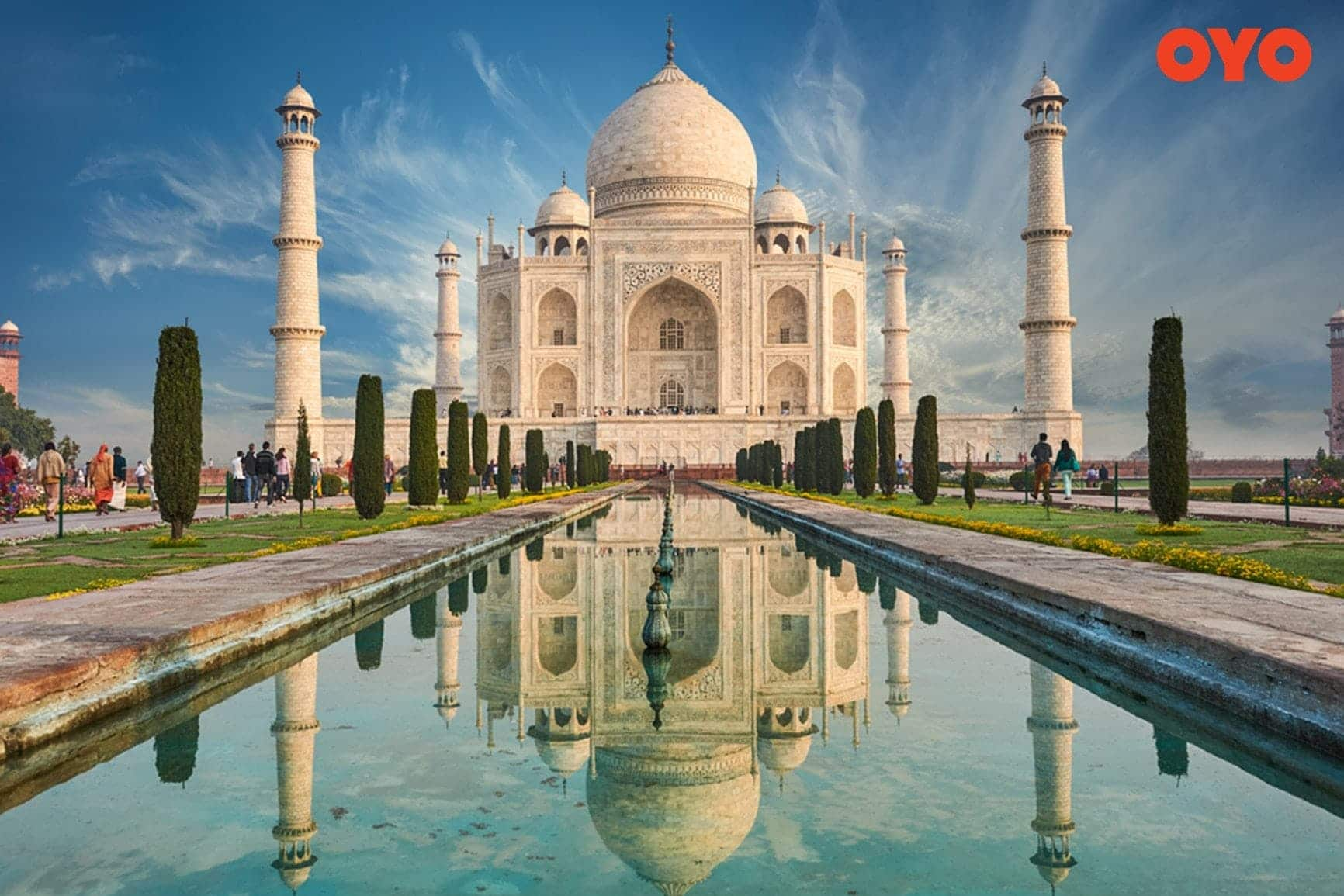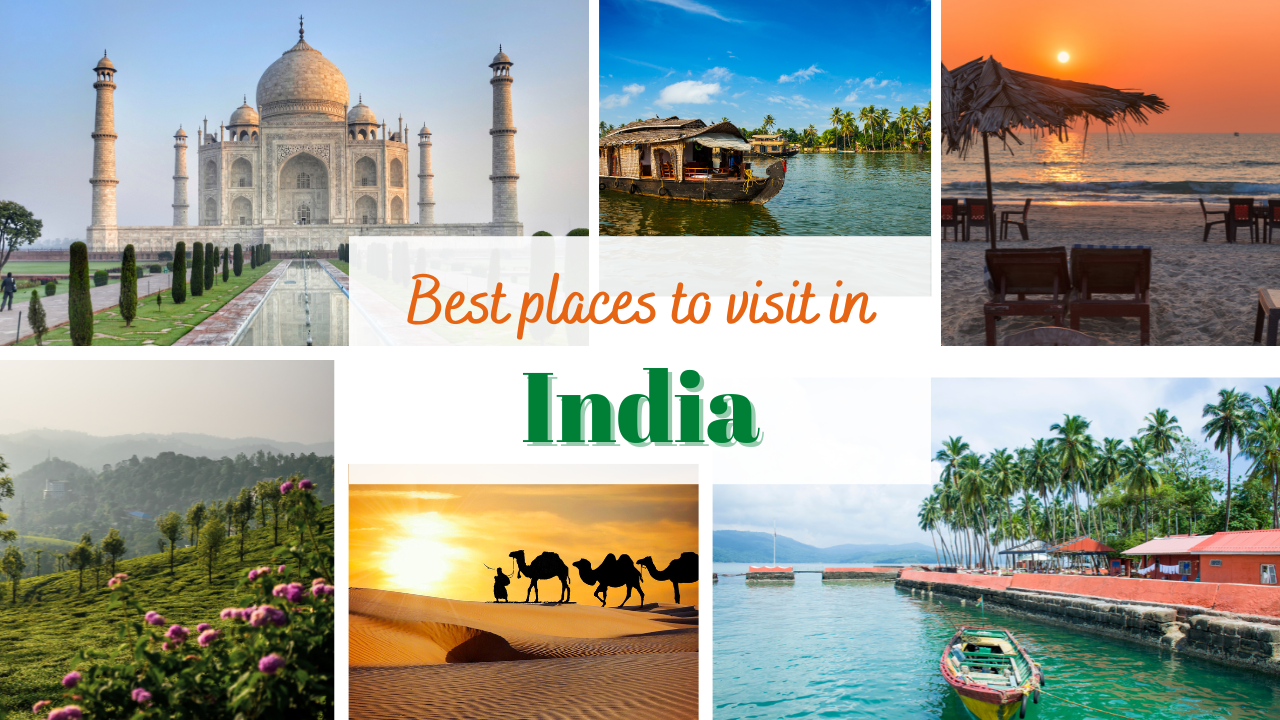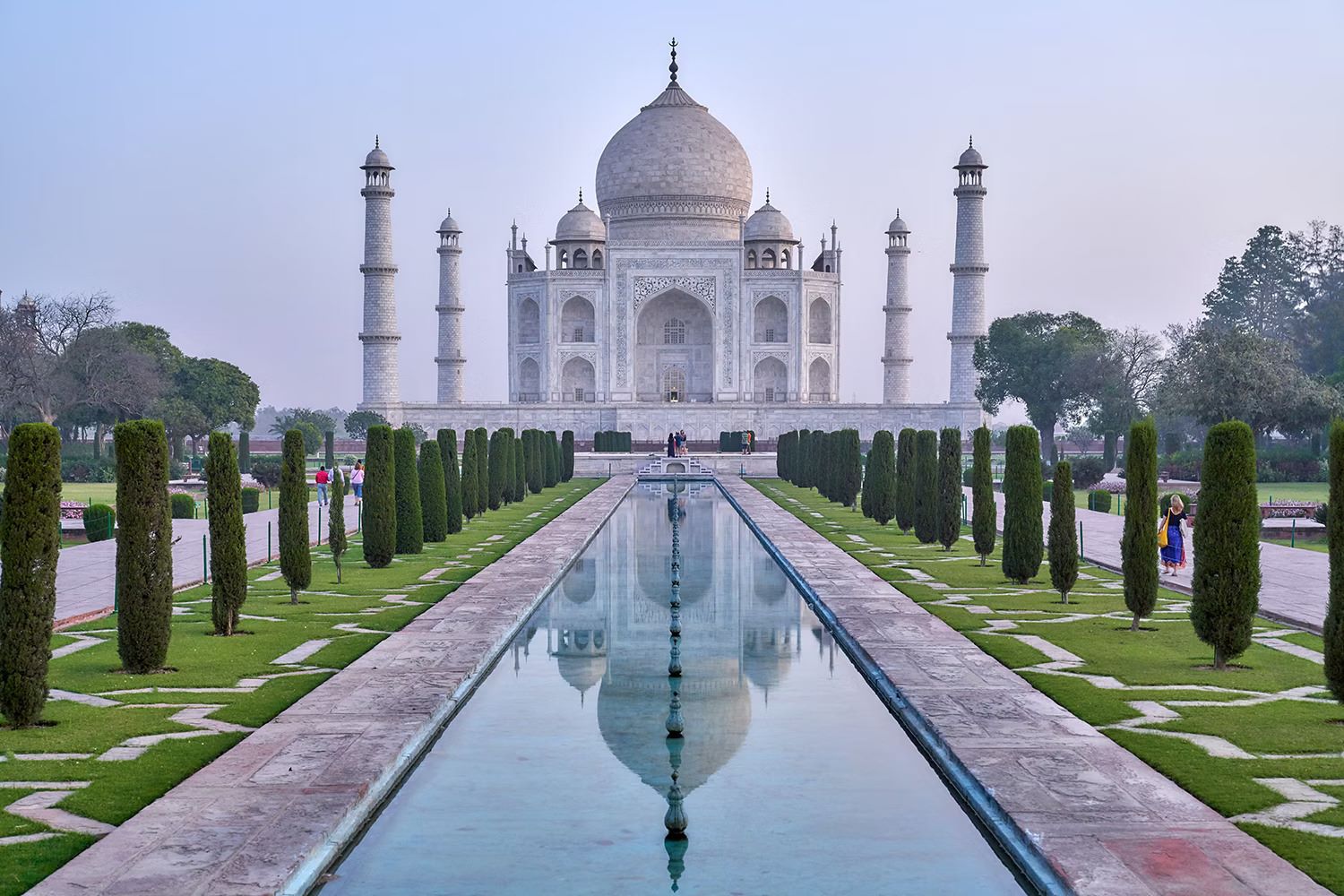
India. The very name evokes a kaleidoscope of images: ancient forts bathed in golden sunlight, bustling bazaars overflowing with vibrant spices, the serene serenity of the Himalayas, and the spiritual resonance of the Ganges. This vast subcontinent, a land of profound contrasts and breathtaking beauty, beckons travelers with its rich history, diverse cultures, and unparalleled experiences. Planning a trip to India can feel daunting, given its sheer size and complexity, but with a little preparation and an open mind, you’ll unlock a world of wonder that will linger in your soul long after you’ve departed.
This comprehensive guide will equip you with the knowledge to navigate your Indian adventure, from understanding its captivating past to planning your practicalities.
A Glimpse into India’s Storied Past: A Foundation for Understanding

Related Articles about The Grand Tapestry of India: A Comprehensive Guide to Embarking on Your Unforgettable Journey:
- Paris: A Symphony of Luxury, History, and Unforgettable Stays – Your Ultimate Guide to the City of Light’s Best Hotels
- Poland: A Tapestry of History, Culture, and Unforgettable Attractions
- Lombok: Beyond Bali’s Shadow – A Symphony of Volcanic Majesty, Pristine Beaches, and Rich Culture
- Barcelona’s Beckoning: A Comprehensive Guide to the Catalan Capital’s Top Attractions
- Switzerland: A Land of Enchantment – Exploring the Top Attractions and Planning Your Perfect Trip
To truly appreciate India, a brief understanding of its millennia-old history is essential. From the ancient Indus Valley Civilization, one of the world’s earliest urban cultures, to the rise of powerful empires like the Mauryan and Gupta dynasties, India has been a cradle of civilization. The arrival of Islam brought a new era, leading to the magnificent Mughal Empire, responsible for architectural marvels like the Taj Mahal. The subsequent arrival of European colonial powers, particularly the British, shaped modern India, culminating in its independence in 1947. This rich tapestry of invasions, empires, and philosophies has left an indelible mark on India’s landscape, culture, and traditions, evident in its diverse languages, religions, and architectural styles.
Unveiling the Jewels: India’s Top Attractions
India’s sheer diversity means that no single itinerary can encompass it all. However, certain iconic destinations offer a quintessential Indian experience, providing a fantastic starting point for your exploration:
- The Golden Triangle (Delhi, Agra, Jaipur): This is often the most popular introduction to India for first-time visitors.
- Delhi: The vibrant capital city pulsates with history. Explore the grandeur of the Red Fort, a UNESCO World Heritage site, wander through the narrow lanes of Chandni Chowk for a sensory overload, and find peace at Humayun’s Tomb, a precursor to the Taj Mahal. Visit India Gate, a majestic war memorial, and the serene Lotus Temple.
- Agra: Home to the undisputed icon of India, the Taj Mahal. This breathtaking mausoleum, built by Emperor Shah Jahan for his beloved wife, is an architectural masterpiece and a testament to eternal love. Don’t miss Agra Fort, another UNESCO site, offering stunning views of the Taj Mahal from its ramparts.
- Jaipur (The Pink City): Famous for its rose-hued architecture, Jaipur is a city of forts and palaces. Marvel at the intricate facade of the Hawa Mahal (Palace of Winds), explore the majestic Amber Fort (consider an elephant ride up!), and wander through the opulent City Palace.

- Varanasi: One of the oldest continuously inhabited cities in the world and the spiritual heart of India. Witness the mesmerizing Ganga Aarti ceremony at the ghats, where thousands of lamps are lit to honor the river goddess. Take a boat ride on the Ganges at sunrise to observe ancient rituals and the cycle of life.
- Rajasthan’s Royal Cities: Beyond Jaipur, Rajasthan offers a treasure trove of royal grandeur.
- Udaipur (The City of Lakes): A romantic city with shimmering lakes, opulent palaces, and a charming old town. Visit the City Palace, a sprawling complex overlooking Lake Pichola, and enjoy a boat ride on the lake.
- Jodhpur (The Blue City): Dominated by the imposing Mehrangarh Fort, which offers panoramic views of the city painted in hues of blue. Explore the fort’s museums and wander through the bustling Sardar Market.
- Jaisalmer (The Golden City): A desert city that seems to rise from the sand, with its magnificent Jaisalmer Fort still inhabited today. Experience a camel safari in the Thar Desert and sleep under a canopy of stars.
- Kerala (God’s Own Country): Located in the southern tip of India, Kerala offers a different pace and a lush, tropical paradise.
- Backwaters: Cruise along the serene backwaters on a houseboat, drifting through emerald rice paddies and coconut groves.
- Munnar: Explore sprawling tea plantations and enjoy the cool mountain air.
- Kochi (Cochin): A historic port city with a blend of colonial influences, Chinese fishing nets, and vibrant markets.
- Goa: Famous for its sun-drenched beaches, Portuguese heritage, and vibrant nightlife. Whether you seek relaxation on the sand or lively parties, Goa offers a diverse coastal experience.
- The Himalayas: For adventure seekers and spiritual seekers alike, the Himalayas offer breathtaking landscapes and serene monasteries.
- Leh-Ladakh: A high-altitude desert region with stark beauty, ancient monasteries, and stunning mountain passes.
- Rishikesh: The "Yoga Capital of the World," nestled on the banks of the Ganges, offering ashrams, yoga retreats, and thrilling white-water rafting.
Essential Travel Tips for a Smooth Indian Sojourn
Navigating India can be an adventure in itself. Here are some practical tips to ensure a smoother and more enjoyable journey:
- Visas: Most nationalities require a visa to enter India. Apply for your visa well in advance, either through an Indian embassy or consulate in your home country, or by using the e-Visa facility for eligible citizens.
- Health Precautions: Consult your doctor about recommended vaccinations and malaria precautions. Drink bottled water and avoid ice in drinks. Be cautious with street food, opting for freshly cooked and hot dishes. Carry a basic first-aid kit.
- Currency: The Indian Rupee (INR) is the official currency. ATMs are widely available in cities, but it’s advisable to carry some cash, especially in smaller towns. Credit cards are accepted in larger hotels and shops.
- Language: Hindi is the official language, but English is widely spoken in tourist areas, hotels, and by educated individuals. Learning a few basic Hindi phrases like "Namaste" (hello), "Dhanyawad" (thank you), and "Kitna hai?" (how much is it?) will be appreciated.
- Culture and Etiquette: India is a deeply traditional country. Dress modestly, especially when visiting religious sites. Remove your shoes before entering temples and homes. Be respectful of local customs and avoid public displays of affection. Bargaining is common in markets, but do so politely.
- Safety: While generally safe for tourists, it’s wise to be aware of your surroundings, especially in crowded places. Avoid walking alone at night in poorly lit areas. Be wary of unsolicited offers of help and touts.
- Connectivity: SIM cards are readily available and affordable for tourists. Wi-Fi is common in hotels and cafes.
- Packing: Pack light, breathable clothing. Include comfortable walking shoes, sunscreen, a hat, insect repellent, and a universal adapter. A scarf or shawl is useful for covering up at religious sites.
Accommodation Options: From Luxurious Palaces to Cozy Homestays
India offers a diverse range of accommodation to suit every budget and preference:
- Luxury Hotels: India boasts world-class luxury hotels, including heritage properties that were once royal palaces, offering unparalleled comfort, impeccable service, and exquisite dining.
- Mid-Range Hotels: Comfortable and well-equipped hotels are readily available in most cities and tourist destinations, providing good value for money.
- Budget Guesthouses and Hostels: For backpackers and budget travelers, guesthouses and hostels offer affordable and often sociable accommodation.
- Homestays: Experiencing local life firsthand is a rewarding option. Homestays allow you to stay with Indian families, share meals, and gain authentic cultural insights.
- Heritage Hotels: Many former royal palaces and colonial mansions have been converted into charming heritage hotels, offering a unique glimpse into India’s past.
- Ayurvedic Retreats and Yoga Centers: For those seeking wellness and rejuvenation, India offers numerous retreats focused on Ayurveda and yoga.
Getting Around India: A Network of Diverse Transport
India’s extensive transportation network can seem overwhelming, but it offers various ways to explore the country:
- Trains: The Indian Railways are a national icon and an excellent way to travel long distances. They offer different classes, from luxurious AC First Class to basic Sleeper class. Booking tickets in advance, especially for popular routes, is highly recommended.
- Flights: For covering vast distances quickly, domestic flights are a convenient option. Major Indian cities are well-connected by air.
- Buses: A more budget-friendly option for intercity travel, buses range from government-run to private luxury coaches.
- Taxis and Ride-Sharing: Taxis are readily available in cities. Ride-sharing apps like Uber and Ola are popular and convenient.
- Auto-Rickshaws (Tuk-Tuks): A quintessential Indian experience, auto-rickshaws are perfect for short distances within cities. Always agree on the fare before starting your journey.
- Private Cars and Drivers: For a more comfortable and personalized experience, hiring a private car with a driver is a popular option, especially for exploring multiple destinations within a region.
The Best Time to Visit India: Embracing the Seasons
India’s vastness means its climate varies significantly across regions. The best time to visit generally depends on which part of the country you plan to explore:
- Winter (October to March): This is the most popular time to visit most of India, particularly the northern plains and Rajasthan. The weather is pleasant, with cool to mild temperatures, making sightseeing comfortable. The Himalayas will be cold, but accessible in certain regions.
- Spring (March to May): Temperatures begin to rise across India, and it can become quite hot in the plains. This is a good time to visit the cooler hill stations in the north or the southern parts of the country.
- Monsoon (June to September): This period brings heavy rainfall to most of India, especially the west and south. While it can disrupt travel plans, it also brings lush greenery and a refreshing respite from the heat. Some regions, like Ladakh, remain dry during this time and are excellent to visit.
- Post-Monsoon (September to October): The landscape is revitalized after the rains, and the weather starts to become pleasant again, especially in the north.
In summary, for the Golden Triangle and Rajasthan, October to March is ideal. For Kerala, the winter months are pleasant, while the monsoon season can offer a unique experience with fewer crowds and lush landscapes. For the Himalayas, summer (May to September) is generally the best time to visit.
The Grand Finale: An Unforgettable Journey Awaits
Traveling to India is not just a vacation; it’s an immersion. It’s a journey that will challenge your perceptions, ignite your senses, and leave you with a profound appreciation for the beauty and resilience of the human spirit. From the awe-inspiring architectural wonders to the warmth of its people and the vibrant tapestry of its cultures, India promises an experience that will resonate with you long after you’ve returned home. So, pack your bags, open your heart, and embark on an unforgettable adventure to the land of a thousand wonders. Your grand Indian tapestry awaits.





